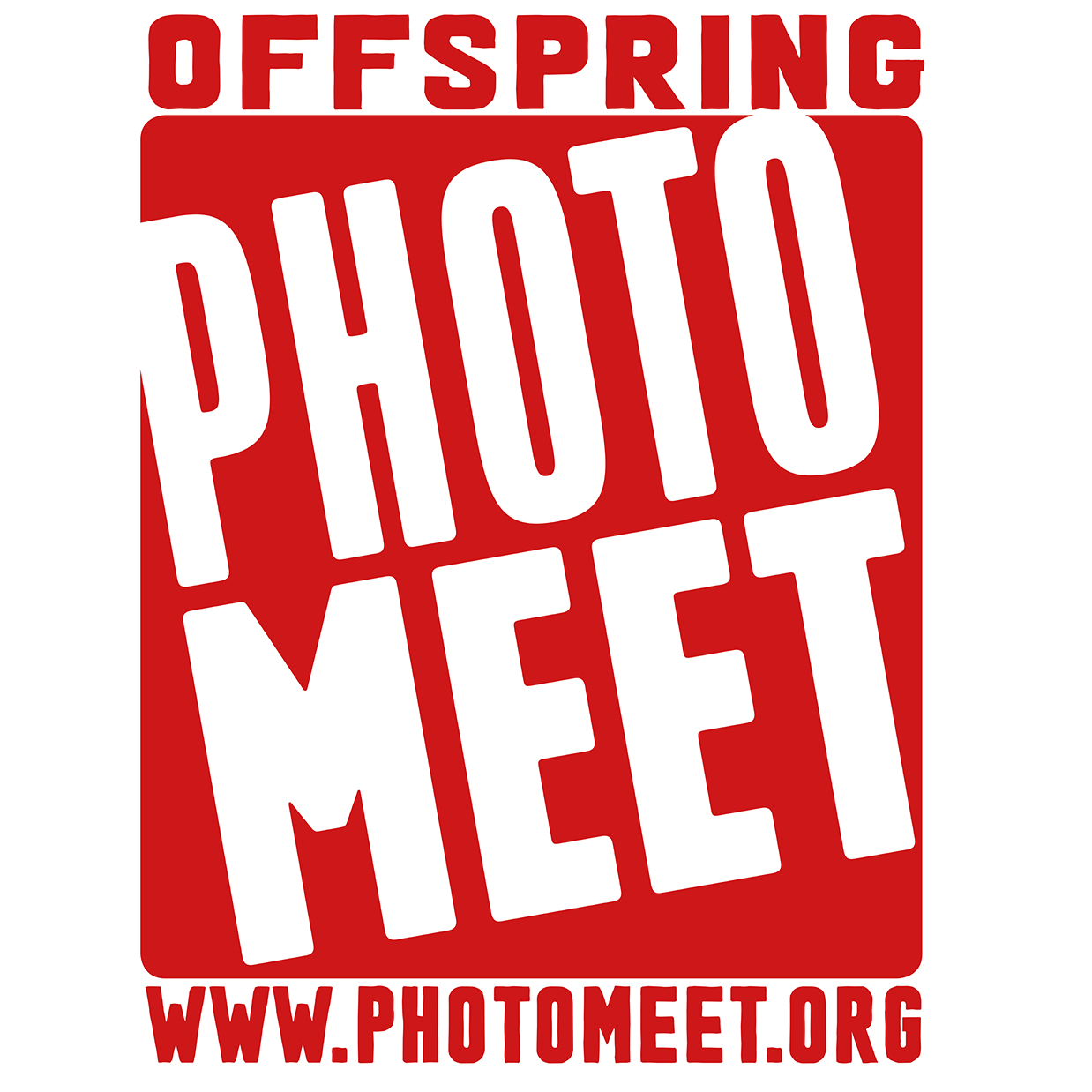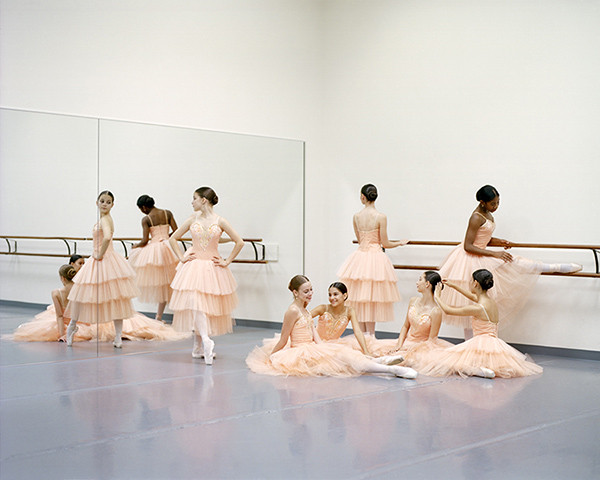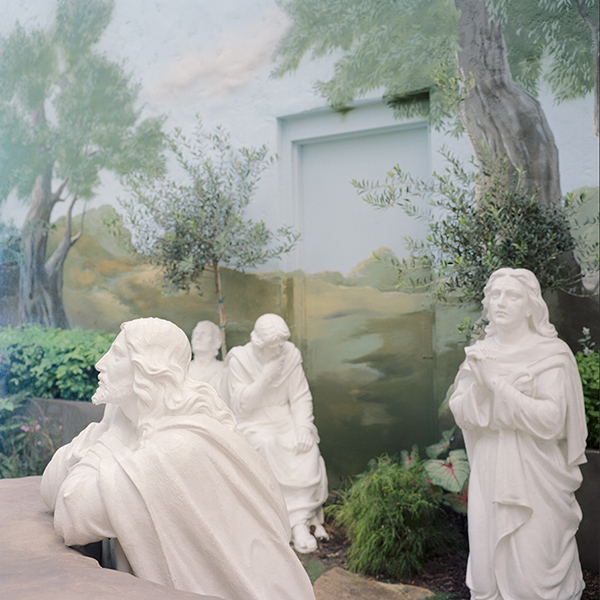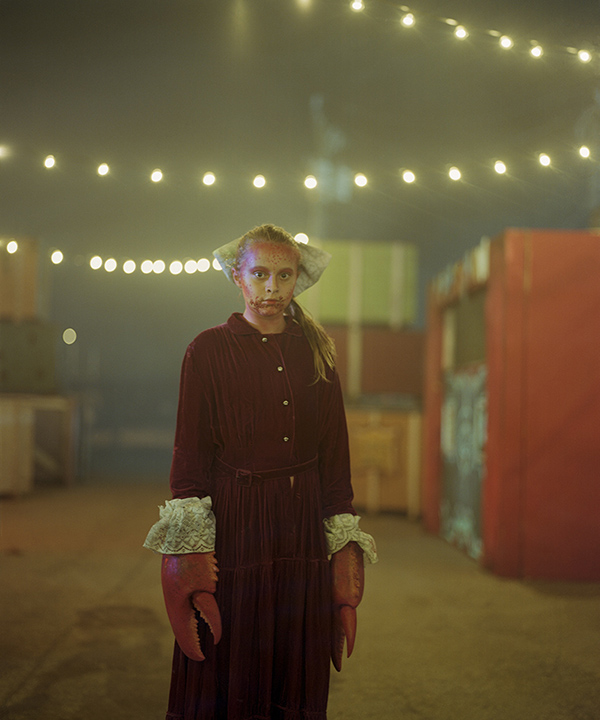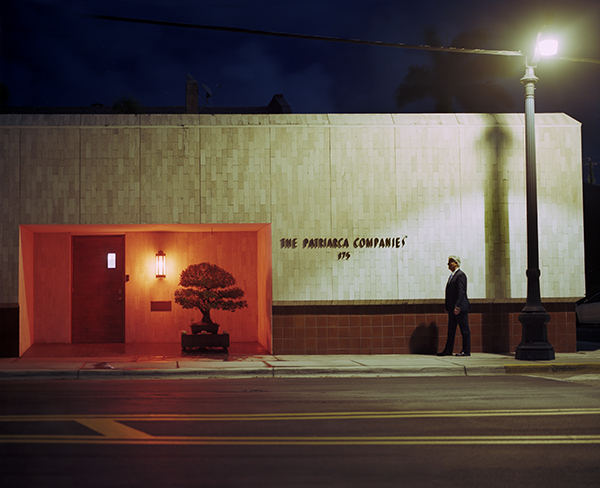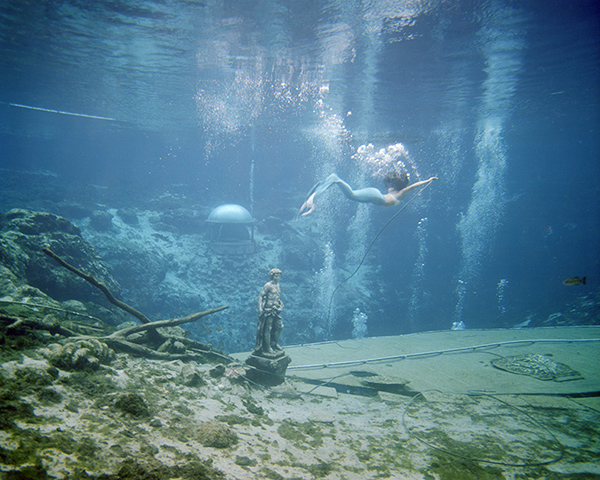an interview with Rachel Louise Brown
Rachel, your work embraces a number of approaches and it covers a variety of subjects. From studio to staged photography, from landscape to portraiture, a familiar yet unsettling sense of being arises. References to film noire and mystery (The Boarding School, The Malevolent Eye) blend magically with a surfacing obsession, to which the viewer is compelled to emotionally engage. We, the viewers become part of your stories. Is this intentional?
I have a fascination with how the psychology of a space or situation can be translated into an image. It began 10 years ago when I moved to New York to participate in a year-long artist’s residency at the School of Visual Arts. I had never been to America and only experienced it through literature and the movies. For months I felt displaced, unfamiliar - as though I was living in the tension and suspense of a thriller. I decided to explore the psychology of what I was feeling by wandering around at night, alone, with a medium format camera on a tripod, shooting slow exposures of scenes that held a heightened sense of unease. The real thrill came when developing the film and seeing the hyper real colours and atmosphere that had absorbed into the celluloid. This way of working became addictive and I found myself travelling further from the city, searching for more tense situations, wandering around the streets of small Upstate towns, trespassing onto farms, spending nights in haunted houses. Eventually I had faced the fear and looked for alternatives states of being. This led to the work including performances by strangers within the unfamiliar locations; the strangers were found via casting calls, and I also turned the camera upon myself – becoming an unrecognisable presence within the environment.
The psychology and performances recorded in the photographs tend to abstract reality; they create an alternate narrative which the audience can escape and embed themselves within. If you take me out of the equation, they could be the photographer trespassing, or the stranger acting within the image; they have to interpret the moments prior to and after what is captured - as a result they also become the storyteller.
Touching again on the themes you’re interested with, can you tell us what/who inspired your love affair with visual imagery?
I am inspired by the power of photography to convey a subjective narrative. Being dyslexic and dyspraxic I didn’t realise until my diagnosis that I had naturally gravitated towards photography as a coping mechanism. I wanted to be a journalist but struggle with writing. Photography became my medium in attempting to understand and portray meaning. Over time those messages have twisted and changed, influenced by the osmosis of the current moment. I am inspired by so many things it’s hard to list but some of the key things are; the politics of the being female, psychology, the visual language of fear, the body language that a subject performs for the camera and how that links to social conditioning and the performance of gender. Artists who have had a big impact on me are Jo Spence, Carolee Schneemann, Agnes Varda, Gillian Wearing and Cindy Sherman. I enjoy the elaborate casting and staging of Gregory Crewdson, the atmosphere of Todd Hido and the quietness of Hiroshi Sugimoto’s Seascapes. Painting is a huge inspiration; particularly the colour palettes of Edward Hopper and Dorothea Tanning, as are books with a strange philosophical underpinning, such as The Story of the Eye by Georges Bataille and all novels by Tom Robbins.
As Photography Director of Harpers Bazaar and Town & Country, you find yourself commissioning work to prominent and emerging artists. Can you articulate how you manage to juggle from being on either side of the photography industry? Pressing on this point, did it ever happen (we don’t need any names) that you thought you would have been a better photographer for a specific commission?
It's a difficult balancing act but I am very lucky to adore my role at the magazines, and although it is a demanding job I get to be creative and live vicariously through my photographers. I work for a wonderful editor who is very supportive and I make sure that my own practice does not interfere with the ability to do my job. Every year I take two weeks to devote myself to making new work. I also shoot on evenings and weekends when possible and surround myself with interesting creatives who inspire. I also teach photography students at Leeds Arts University and Huddersfield University once a term. They keep me inspired.
My photographers are far far better than I am but there was a recent story that I wish I could have commissioned myself for; as it tied in so well with my practise. I sent the incredible Harry Cory Wright to photograph the site of Borley Manor for Town & Country. He photographed after dark, creeping around, capturing the atmosphere of what is described as one of the most haunted places in Britain. Had I not been eight months pregnant I may have accompanied him!
You have recently been offered a commission from a major institution to have your work displayed in London in May. Are you able (allowed) to tell us more about it? Who commissioned you and what are you going to show?
Excitingly yes! I am one of the three Pavilion Commissions at this year’s Photo London fair at Somerset House. The directors of the fair decided to have a ‘women in photography’ focus for this year’s edition and asked myself and two very well known, iconic female photographers to show work on the outside of the Pavilion Tent (which sits in the courtyard of Somerset House). I still cannot believe I am being shown alongside these women. I wish I could name them but they are yet to be announced. For the commission I am showcasing my most recent project SIMULATIONS. The work was created over four years whilst I was artist in residence at the Palm Beach Photographic Centre, Florida. I used two weeks of my holiday every year to return to the centre, where I focussed on the project and taught photography to locals. Influenced by Jean Baudrillard’s seminal text Simulacra and Simulations (1981) the work explored what he describes as ‘imagination stations’, looking at how simulated environments, created as a means of escaping reality, actually seep into the everyday; that our everyday existence has become an imagination station. Florida, advertised as the place for escapism and thrill-seeking (with the likes of Disney and Universal) was the perfect place to explore this notion. I had a solo show of the work at the Palm Beach Photographic Centre in March 2018. This is the first UK showing of the work and it’s great to be revisiting it for a different audience.
We at Photo Meet had the pleasure to have you amongst our lineup of photo-experts reviewing portfolio at the Offspring event. This coming June you will again review the work of many photographers willing to have a break in the industry, but you have also signed up to have your portfolio reviewed. Again you’ll find yourself in either side of the desk. Do you look forward to take on two different roles? What do you expect as a photo-expert reviewing portfolios and what from showing your work to relevant representative of the industry?
I’ve reviewed at Photo Meet for several years now and it is always a highlight to meet such interesting photographers and be in a room with the crème de la crème of those making the industry merry-go-round turn. As a reviewer I kept my own photographic work secret but the Photo London commission has given me the confidence to finally show my portfolio to a selection of peers whose opinions I respect immensely. I am very nervous.
Finally, do you have a next project we should be looking out to see?
I’ve recently become a mother. Late in my pregnancy I took ghostly self-portraits at the shell grotto in Margate – an underground cavern covered in millions of shells, discovered under a house in the town. Nobody knows what it was made for but it feels like a ritualistic feminine space. I shot there instinctively, without conceptual drive and looking at the images now can see how scared I was of the impending new chapter in my life. The portrait may be the starting point of a new body of work but for the immediate future I am going spend time getting to know my son and seeing the world through his eyes.
ALL PHOTOGRAPHS are COPYRIGHT of RACHEL LOUISE BROWN
Rachel Louise Brown
Rachel Louise Brown is the Photography Director of Harper’s Bazaar, Town & Country (UK editions). Alongside this Brown is a fine art photographer whose artistic relationship to the world is one of a curious, anthropological nature. Fascinated by the way in which fantasy, myth and expectation are woven into the construction of reality, Brown makes responsive work based on her interactions with the unfamiliar. She graduated from the Royal College of Art, London in 2011 with an MA Photography, following a year long critical certificate in photography at the School of Visual Arts (NYC) and a BA (Hons) Photography at London College of Communication. Brown has participated in artist residencies and exhibited internationally.
